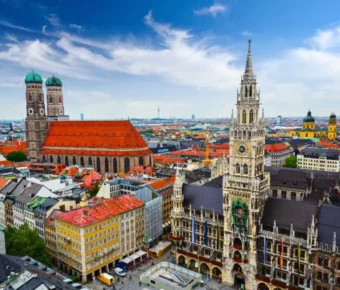
Tamarindo vs Quepos: 5 Key Differences Between Costa Rica’s Pacific Beach Destinations (2025 Guide)
Are you trying to decide between Tamarindo and Quepos for your next Costa Rica getaway? These two popular destinations offer very different experiences despite being coastal towns.
Tamarindo attracts visitors with its vibrant nightlife, tourist-friendly atmosphere, and excellent surfing conditions, while Quepos serves as the gateway to Manuel Antonio with its lush landscapes and resort options. The climate differs too – Tamarindo sits in the drier Guanacaste region with flatter terrain, while Quepos enjoys a greener environment with more rainfall.
Your preference between these Costa Rican gems depends on what you’re seeking. Couples often appreciate Tamarindo’s beaches and attractions, but families might find the waters near Quepos more challenging for small children. Both destinations showcase Costa Rica’s natural beauty with their unique flavors.
Table of Contents
- Geographical Overview
- Location in Costa Rica
- Climate Comparison
- Travel Access and Transportation
- Arriving from San Jose
- Local Transport Options
- Accommodations and Lodging
- Hotels and Resorts
- Local Guesthouses and B&Bs
- Cultural and Recreational Activities
- Beach Activities and Water Sports
- Local Events and Nightlife
- Culinary Experiences
- Natural Attractions and Wildlife
- Manuel Antonio National Park
- Marine Biodiversity
- Adventure and Eco-Tourism
- Ziplining and Canopy Tours
- Snorkeling and Scuba Diving
- Comparing Tamarindo and Quepos
- Tourist Popularity
- Cost of Visit
- Best Time to Visit
- Planning Your Trip
- Budgeting Tips
- Itinerary Suggestions
- Safety and Health Precautions
- Frequently Asked Questions
- What are the key differences between the beaches of Tamarindo and Quepos?
- How does nightlife compare to that of Tamarindo and Quepos?
- What distinct wildlife experiences can visitors expect in Tamarindo versus Quepos?
- Can you compare the accessibility of tourist amenities in Tamarindo with those in Quepos?
- Regarding family-friendly activities, how do Tamarindo and Quepos stack up against each other?
- What factors should you consider when choosing between staying in Tamarindo vs. the vicinity of Manuel Antonio National Park?
- Book Your Dream Experience
- More Travel Guides
Geographical Overview
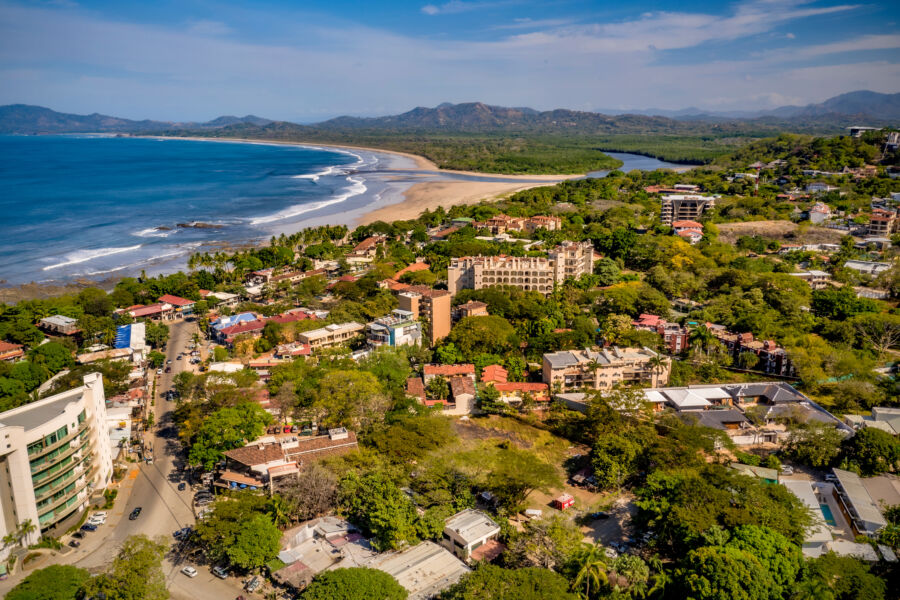
Tamarindo and Quepos sit in different regions of Costa Rica, each with unique geographical features that shape the visitor experience. These locations offer distinct climates and terrains that appeal to other types of travelers.
Location in Costa Rica
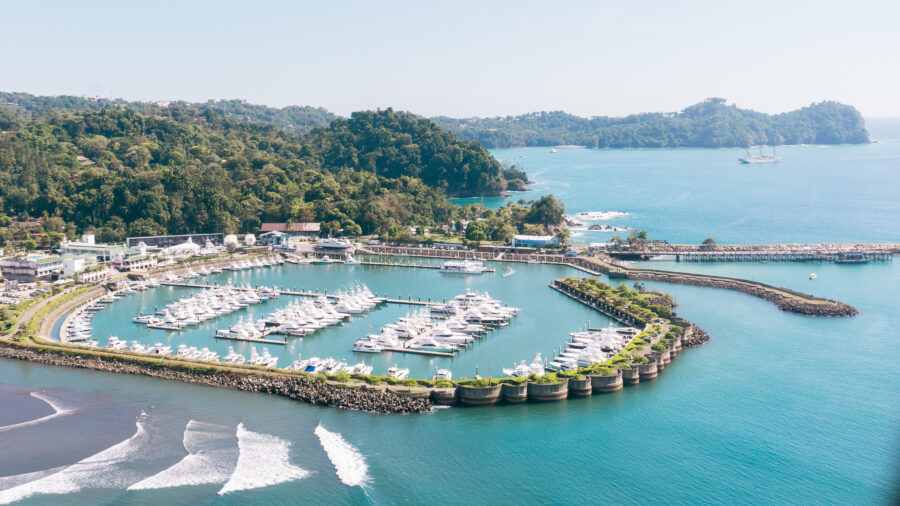
Tamarindo is nestled in the Guanacaste province on Costa Rica’s northern Pacific coast. This popular beach town sits on the Nicoya Peninsula, known for its golden-sand beaches and clear waters. The area features a relatively flat landscape compared to other parts of Costa Rica, making it easier to navigate on foot.
Quepos, on the other hand, is located on the central Pacific coast. It is the gateway to Manuel Antonio National Park, one of Costa Rica’s most visited natural attractions. The terrain around Quepos is more varied, with the town built into rolling hills that eventually rise toward the mountains.
The distance between these two destinations is significant—about a 4-hour drive separates them. Tamarindo is positioned further north, and Quepos is centrally located along Costa Rica’s Pacific edge.
Climate Comparison

The climate differs notably between these two destinations. Tamarindo experiences a tropical dry climate typical of Guanacaste province. This region sees a distinct dry season from December to April with almost no rainfall, brilliant sunshine, and temperatures consistently reaching the high 80s°F to low 90s°F (30-35°C).
Quepos has a more humid tropical climate with greater annual rainfall. Even during the dry season, the area around Quepos appears greener and more lush than Tamarindo. The rainy season (May-November) brings hefty downpours to Quepos, though mornings often remain sunny.
Temperature variations between the two locations aren’t dramatic, but Quepos typically feels a bit cooler due to its greater humidity and more abundant vegetation. The extra rainfall creates a more verdant landscape around Quepos than Tamarindo’s drier aesthetic.
Travel Access and Transportation
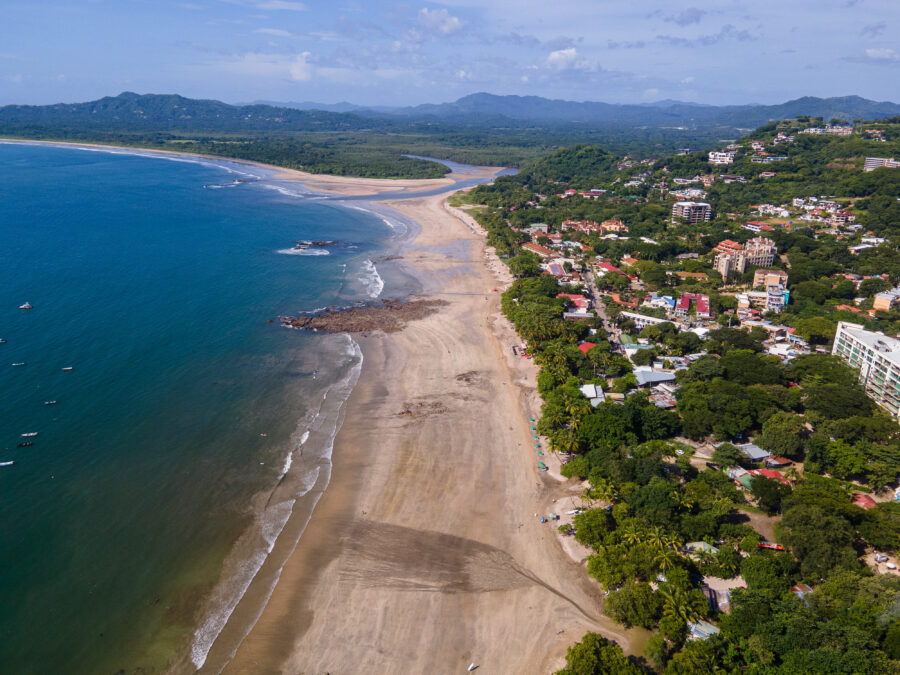
Getting to and around Tamarindo and Quepos requires some planning. Both destinations have different access points and local transportation options that can impact your travel experience and budget in Costa Rica.
Arriving from San Jose
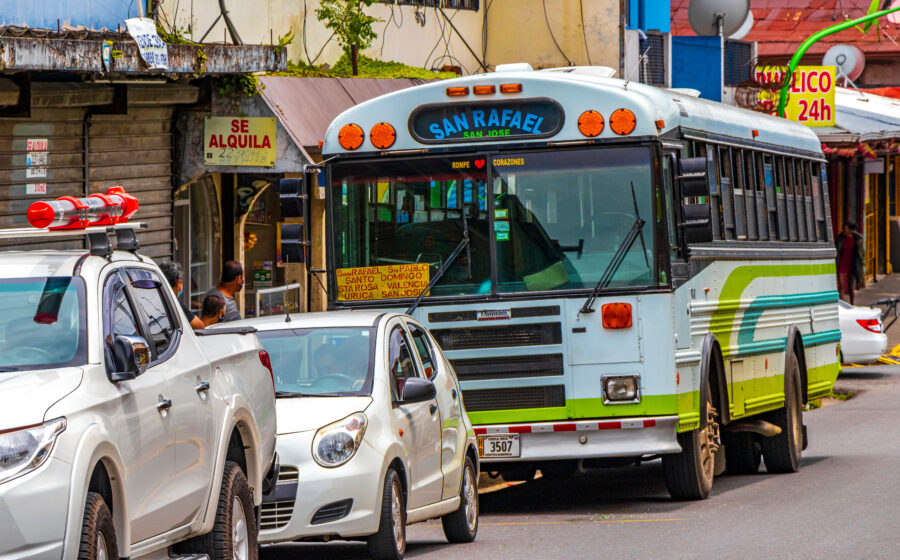
Most international travelers land at San Jose’s Juan Santamaría International Airport before heading to either destination. Tamarindo is about 4-5 hours from San Jose by car, while Quepos takes roughly 3 hours.
You can rent a car at the airport and drive yourself, allowing you to explore at your own pace. The roads to Tamarindo were previously challenging but have improved significantly in recent years. The route to Quepos is generally better maintained.
For those who prefer not to drive, search for shuttle services between destinations. These shared shuttles cost around $50-60 per person and run on fixed schedules.
Public buses are the cheapest option, with tickets costing $8-12 to either destination. The Tamarindo bus takes about 5-6 hours with transfers, while the Quepos route is more direct at 3.5-4 hours.
Local Transport Options
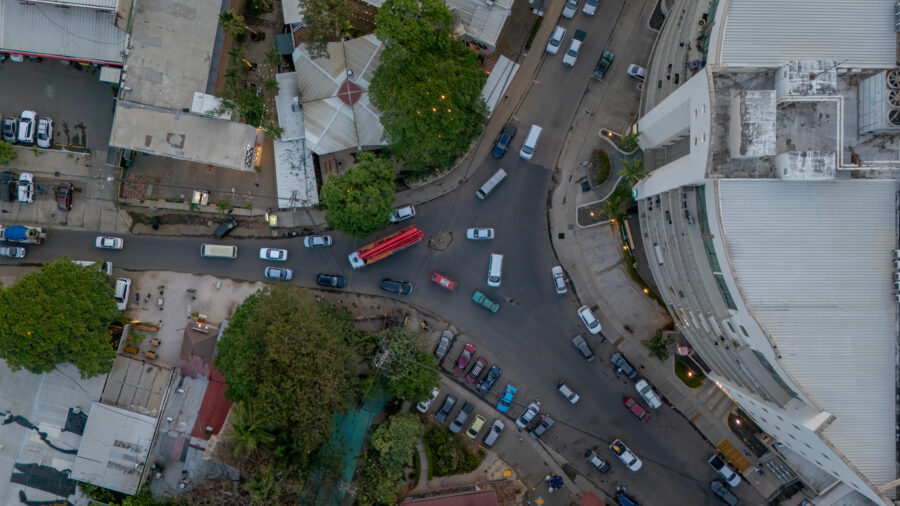
Once in Tamarindo, the town is very walkable. Most hotels, restaurants, and the beach are within easy walking distance. Taxis are readily available for exploring nearby areas, but negotiate fares beforehand as they’re unmetered.
Quepos is compact, but many visitors stay about 7 km away in Manuel Antonio. Regular public buses run between Quepos and Manuel Antonio every 30 minutes for less than $1 each way.
Bicycle rentals are popular in both locations. Tamarindo has several rental shops charging $10-15 per day. Quepos/Manuel Antonio has fewer rental options due to the hilly terrain.
Tour companies offer excursions for day trips from either location with transportation included. This is often the most convenient way to visit attractions like national parks or beaches without navigating transportation.
Accommodations and Lodging
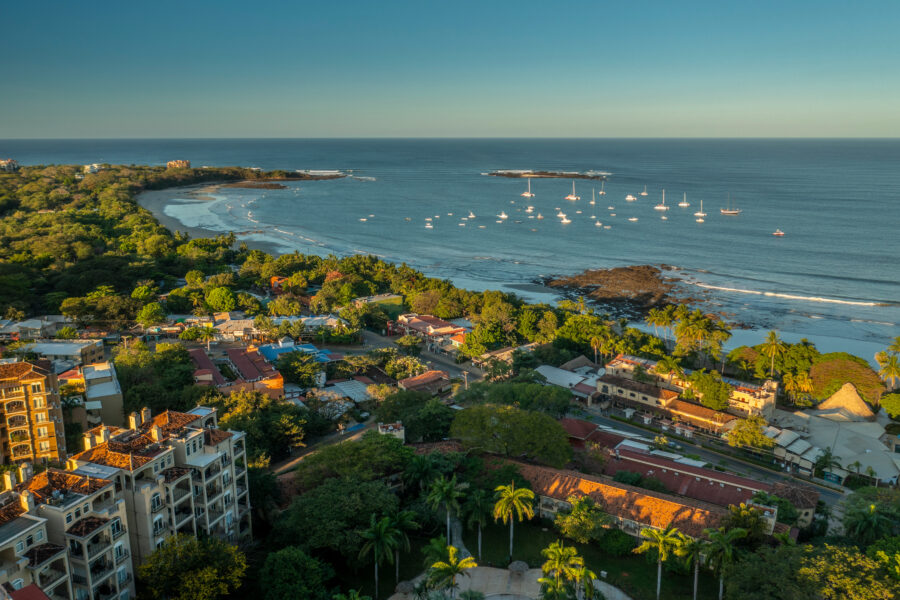
Your lodging options will significantly impact your Costa Rica experience when choosing between Tamarindo and Quepos. Both destinations offer distinct accommodation styles that cater to different preferences and budgets.
Hotels and Resorts
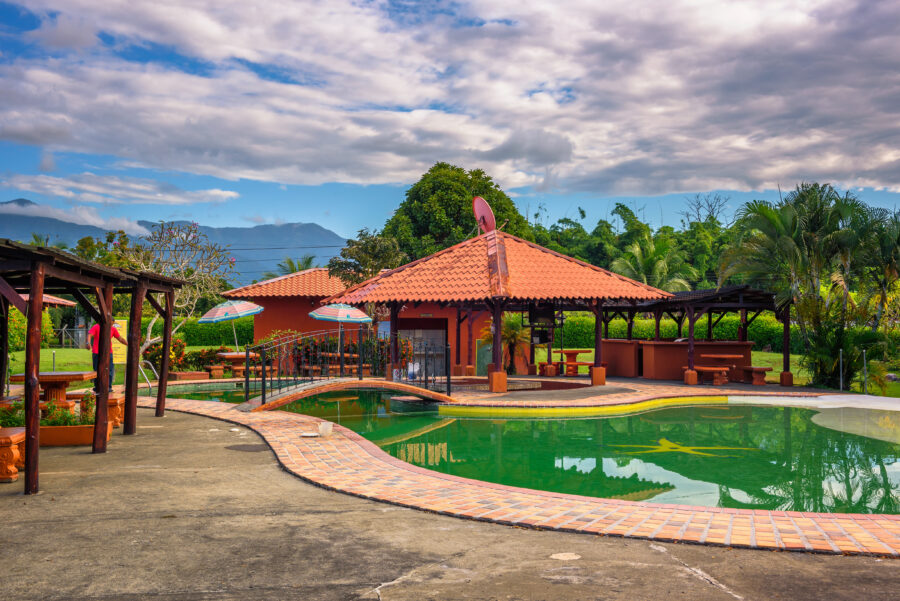
Tamarindo boasts more beachfront hotels and resorts than Quepos, making it ideal for travelers seeking direct ocean access. Many properties offer stunning sunset views right from your room—prices in Tamarindo average around $144 per day, slightly higher than in Quepos.
The town features a mix of luxury resorts with full amenities and mid-range options that won’t break the bank. Most accommodations are within walking distance to restaurants and nightlife, perfect for those who prefer convenience.
Quepos and the Manuel Antonio area offer fewer beachfront options, with most hotels in the hills overlooking the ocean. This provides spectacular views but requires transportation to reach the beach. At around $138 per day, Booking.com shows Quepos accommodations are slightly more affordable.
Local Guesthouses and B&Bs
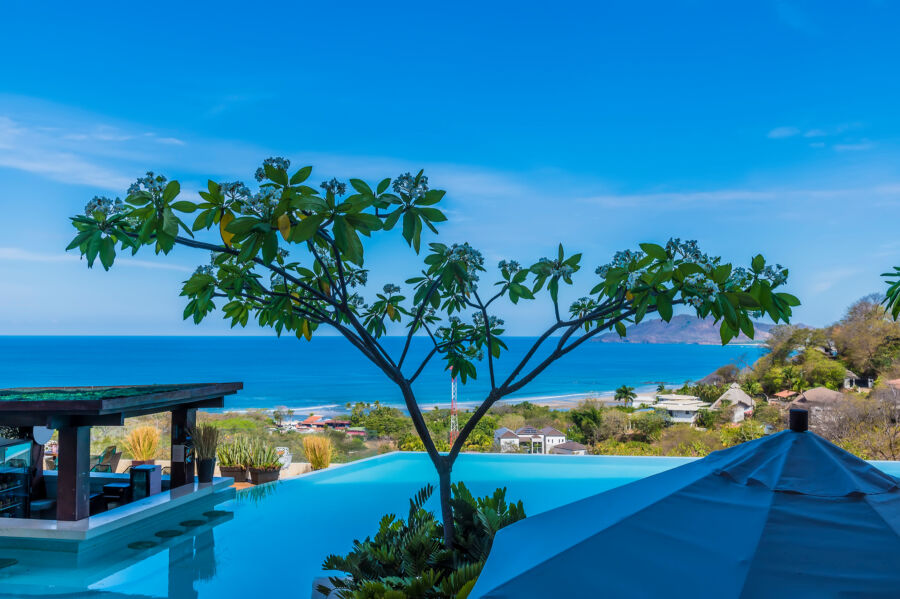
Both destinations shine with local options for budget-conscious travelers or those seeking authentic experiences. Quepos features charming guesthouses tucked into lush settings near Manuel Antonio National Park. These smaller establishments often provide a more personal touch and insider knowledge about hidden gems in the area.
Many include breakfast featuring local fruits and Costa Rican coffee. The family-run B&Bs in Quepos tend to be quieter and more intimate than those in bustling Tamarindo.
Tamarindo’s guesthouses and hostels cater more to the surf crowd and social travelers. They’re typically livelier with communal spaces for meeting fellow tourists. Some offer surf lessons or beach equipment rentals as part of their services.
Despite their lower prices, these accommodations still provide comfortable amenities and genuine Costa Rican hospitality in both locations.
See Related: Quepos vs Manuel Antonio: Key Differences to Know Before Your Costa Rica Vacation
Cultural and Recreational Activities
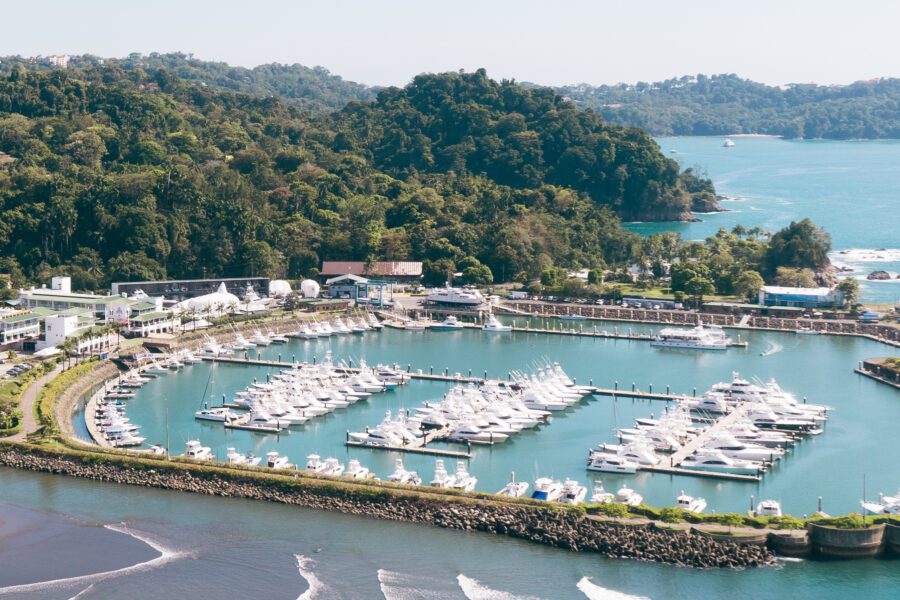
Both Tamarindo and Quepos offer unique experiences for travelers seeking fun and culture. Each destination has its own flavor of beach activities, nightlife, and local cuisine that shapes your Costa Rican adventure.
Beach Activities and Water Sports

Tamarindo is a water sports paradise with consistent waves, making it a surfer’s dream. Beginners can take lessons at several surf schools along the beach, while more experienced surfers enjoy the challenging breaks at nearby Playa Grande.
Besides surfing, visitors can enjoy:
- Catamaran sunset cruises
- Sport fishing excursions
- Stand-up paddleboarding
- Snorkeling around the coral reefs
Quepos is the gateway to Manuel Antonio, with more laid-back beach activities. The calmer waters are perfect for swimming and kayaking through mangroves. Travel tours and activities are easily accessible from both locations.
Wildlife spotting becomes part of the beach experience in Quepos, with monkeys and sloths often visible from the shore. The beaches near Quepos tend to be less crowded, allowing for more peaceful sunbathing and relaxation.
Local Events and Nightlife
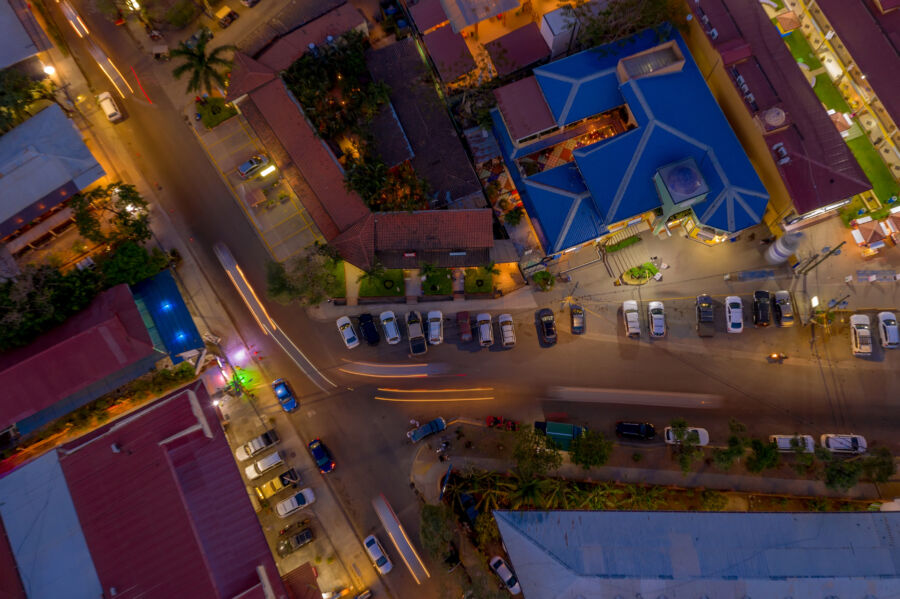
Tamarindo boasts a vibrant nightlife scene with beachfront bars, live music venues, and dance clubs that stay open late. The town has earned its reputation as a party destination where tourists and locals mix freely.
Weekly events include:
- Beach bonfires with drum circles
- Live music at El Vaquero and Shark Bar
- Ladies’ nights at various clubs
Quepos offers a more authentic Costa Rican nightlife experience. In the evenings, local sodas (small family-run restaurants) transform into gathering spots where you can enjoy Imperial beer and converse with residents.
The town comes alive during annual festivals like the Offshore World Championship fishing tournament. While smaller than Tamarindo’s party scene, Quepos nightlife feels more connected to local culture and traditions.
Culinary Experiences
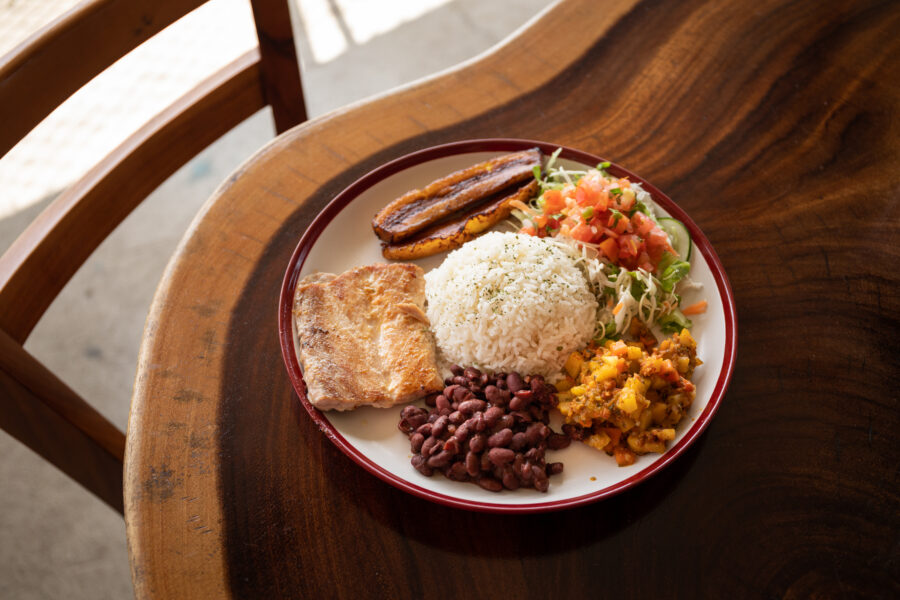
Tamarindo’s international influence is evident in its diverse dining scene. You’ll find everything from upscale seafood restaurants to authentic Italian eateries and vegan cafés. Beachfront dining is a highlight, with fresh catches served daily.
The weekly farmers market showcases local produce and artisanal foods. Many restaurants offer fusion dishes that blend Costa Rican traditions with global flavors.
Quepos delivers a more authentic Costa Rican culinary experience. Traditional sodas serve casados (typical Costa Rican plates) with rice, beans, plantains, and your choice of protein. The seafood is incredibly fresh, often caught the same morning.
The Marina in Quepos has elevated the dining scene with upscale restaurants. Don’t miss trying the ceviche or whole fried fish—local specialties that showcase the Pacific’s bounty. Street food vendors offer quick, affordable bites like empanadas and patacones.
Natural Attractions and Wildlife

Costa Rica’s biodiversity shines in both regions, offering different experiences for nature lovers. While Manuel Antonio is famous for its preserved rainforest and diverse wildlife, the Tamarindo area showcases impressive marine ecosystems.
Manuel Antonio National Park
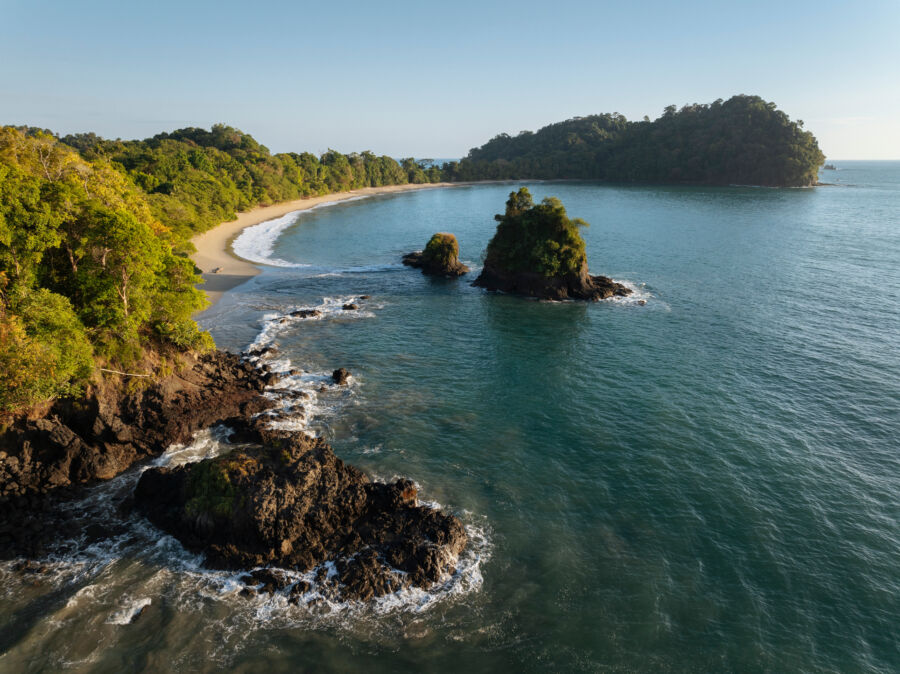
Manuel Antonio National Park is often called Costa Rica’s crown jewel of nature preserves. Despite being one of the country’s smallest national parks, it packs incredible biodiversity into its borders. Visitors regularly spot several monkey species, including white-faced capuchins and howler monkeys, often on the park’s stunning beaches.
The park features well-maintained hiking trails that wind through lush rainforest. Most paths are relatively easy to navigate, making wildlife spotting accessible for all ages and fitness levels.
For the best wildlife viewing, try visiting early in the morning when animals are most active. The park limits daily visitors, so arriving early also helps avoid disappointment during peak tourist season.
Marine Biodiversity

Both regions boast impressive marine ecosystems, but with different highlights. Tamarindo sits near Las Baulas National Marine Park, a critical nesting ground for endangered leatherback turtles. During nesting season (October-March), visitors can join guided tours to observe these magnificent creatures respectfully.
Manuel Antonio’s waters offer excellent snorkeling opportunities with colorful tropical fish and occasional sea turtle sightings. The calm, protected beaches make it ideal for beginners exploring underwater.
For more adventurous travelers, boat tours from either location can bring encounters with dolphins, rays, and sometimes humpback whales during migration seasons. Tamarindo tends to have more consistent surf conditions, attracting marine life that thrives in more active waters.
Adventure and Eco-Tourism
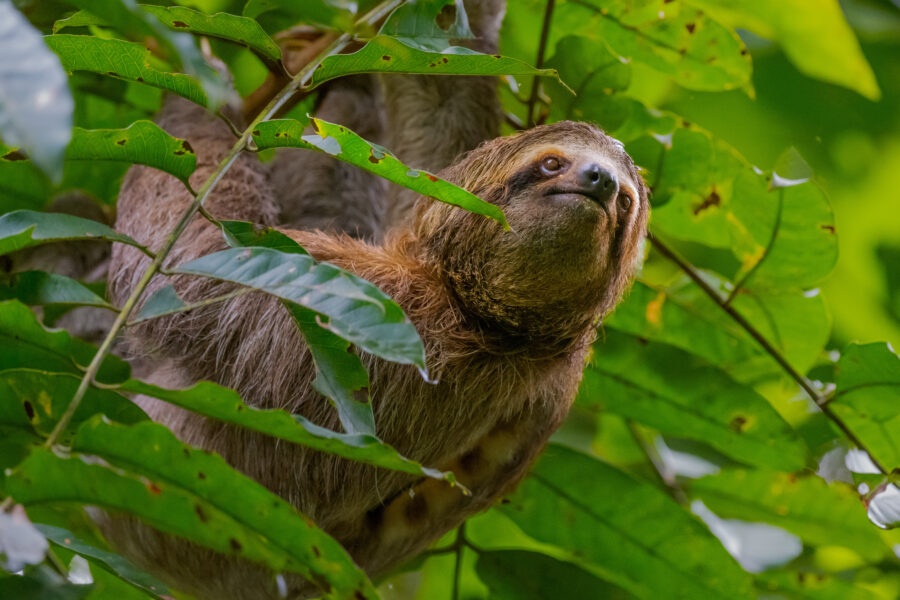
Both Tamarindo and Quepos offer amazing opportunities for adventure seekers. These Costa Rican destinations boast unique ecological experiences, though they differ in what adventures they specialize in.
Ziplining and Canopy Tours

Quepos, as the gateway to Manuel Antonio National Park, offers some of the most scenic ziplining experiences in Costa Rica. The lush rainforest canopy provides a perfect setting for thrilling aerial adventures. Many tours combine ziplining with suspension bridges and nature walks, giving tourists a complete forest experience.
The ziplines near Quepos often provide views of waterfalls and chances to spot monkeys, sloths, and tropical birds as you soar between platforms. Most tours last 2-3 hours and include transportation from local hotels.
While less famous than those near Arenal Volcano, Tamarindo’s canopy tours offer exciting experiences. These tours typically feature drier forest landscapes but compensate with ocean views on clear days. The ziplining adventures in Tamarindo tend to be less crowded than those in Manuel Antonio.
Snorkeling and Scuba Diving

Tamarindo excels at underwater adventures. The area boasts several excellent diving spots with vibrant marine life. Popular snorkeling locations include Playa Conchal, with its crystal-clear waters, and the nearby Catalina Islands, known for manta ray sightings.
Diving centers in Tamarindo cater to all experience levels, from beginners to certified divers. Water visibility is generally good, especially during the dry season (December to April).
Quepos offers different but equally rewarding underwater experiences. The waters around Manuel Antonio feature interesting rock formations and diverse marine species. Snorkelers often encounter colorful tropical fish, sea turtles, and occasional dolphin pods.
Many tourists prefer the calmer waters of Manuel Antonio for beginner snorkeling, while more experienced divers might favor Tamarindo’s variety of dive sites and slightly more abundant marine life.
See Related: Tamarindo vs Manuel Antonio: Key Differences to Know Before Booking Your Costa Rica Beach Vacation
Comparing Tamarindo and Quepos
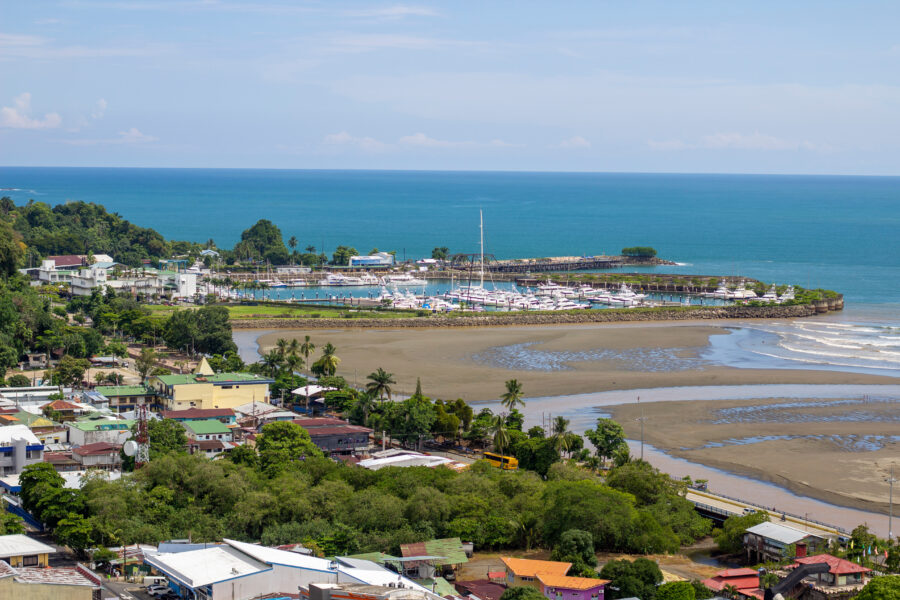
Tamarindo and Quepos represent two distinct Costa Rican coastal experiences with different landscapes, climates, and visitor experiences. Tamarindo sits in the tropical dry region of Guanacaste, while Quepos serves as the gateway to the greener Manuel Antonio area.
Tourist Popularity
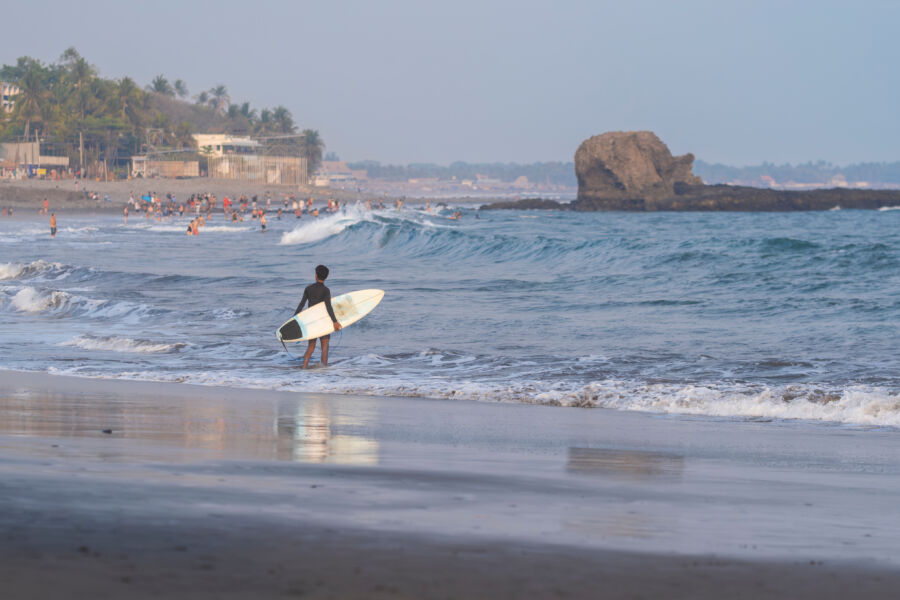
Tamarindo has become one of Costa Rica’s most visited beach destinations, especially popular with North American tourists and surfers. The long, wide beach attracts crowds year-round, with its developed tourist infrastructure including numerous hotels, restaurants, and nightlife options.
Quepos and nearby Manuel Antonio offer a different popularity profile. The area draws visitors primarily for Manuel Antonio National Park, one of Costa Rica’s smallest yet most visited parks. The beaches here are smaller but nestled within lush rainforest settings.
Tourist density differs significantly between seasons in both locations. Tamarindo maintains a steady tourist presence throughout the year, while Quepos sees more dramatic fluctuations between high and low seasons.
Families with children often prefer Manuel Antonio’s calmer waters and wildlife viewing opportunities, while Tamarindo attracts more surfers and party-seekers.
Cost of Visit
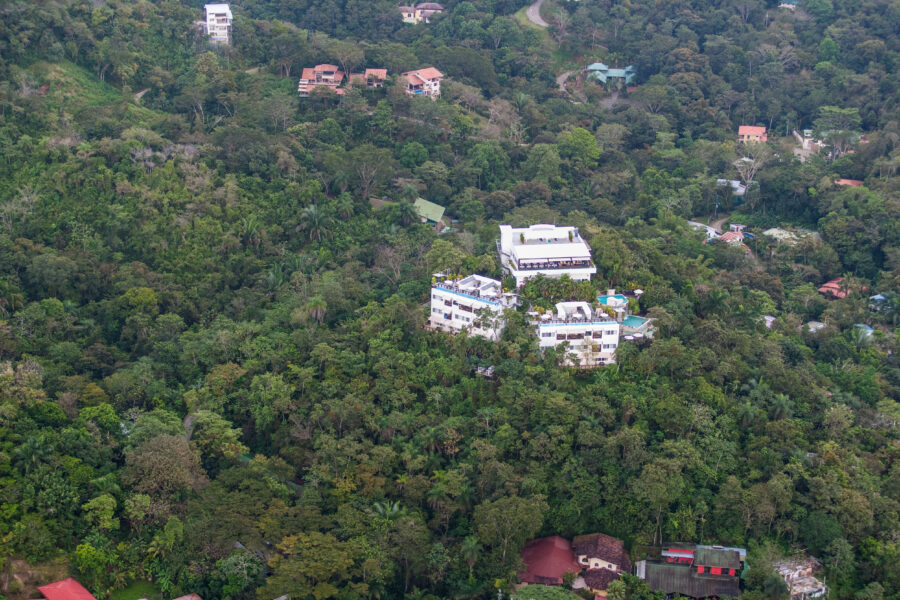
Tamarindo is generally the priciest of Costa Rica’s tourist destinations. Accommodation options range from luxury resorts to mid-range hotels, with fewer budget-friendly choices than other areas.
Average Daily Costs (approximate):
- Mid-range hotel in Tamarindo: $100-200/night
- Mid-range hotel in Quepos: $70-150/night
- Meal at mid-range restaurant: Similar in both ($15-25/person)
Quepos offers more budget-friendly options, especially in the town rather than along the road to Manuel Antonio. Backpackers and budget travelers can find hostels and simple accommodations at reasonable prices.
Activities also differ in cost structure. Manuel Antonio National Park entrance fee ($18 for foreigners) represents good value for wildlife viewing, while Tamarindo’s costs focus more on surf lessons, boat trips, and nightlife.
Best Time to Visit
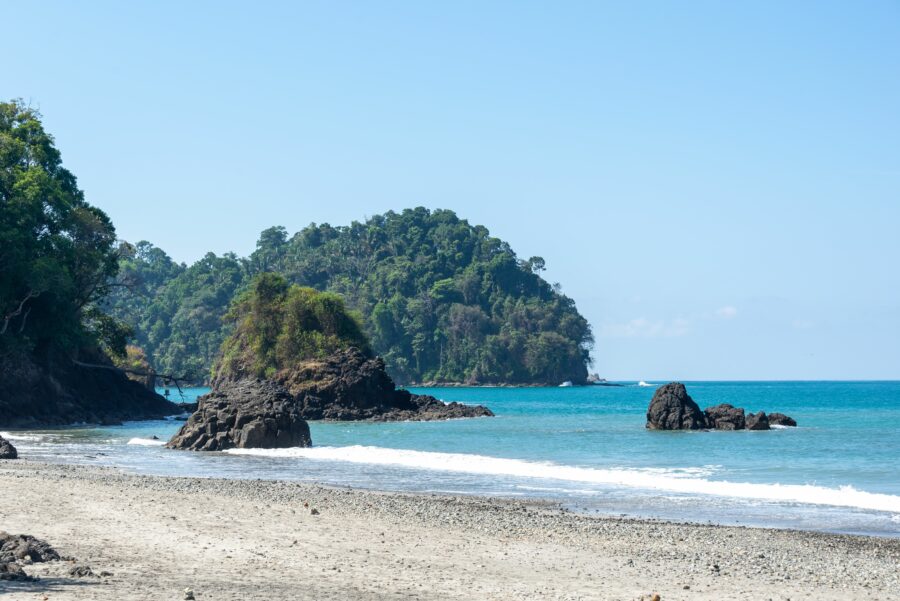
Tamarindo’s location in Guanacaste means it experiences a distinct dry season from December through April. These months bring reliably sunny days with little to no rainfall, making it ideal for beach activities and surfing.
The area gets significantly drier than the rest of Costa Rica during this period, sometimes appearing almost desert-like by April. May through November brings greener landscapes and afternoon rainfall.
Due to their location on the central Pacific coast, Quepos and Manuel Antonio receive more yearly rainfall. The driest months are December through April, but even these can see occasional showers.
September and October bring the heaviest rains to both regions and are generally considered the low season. However, this period offers the lowest prices and fewest crowds for budget-conscious travelers who don’t mind working around rain showers.
Planning Your Trip

Planning a trip to Costa Rica involves key decisions about budget, activities, and health preparations. Both Tamarindo and Quepos offer unique experiences that require different planning approaches.
Budgeting Tips

Costa Rica isn’t the cheapest Central American destination, but you can visit without breaking the bank. In Tamarindo, expect to pay more for accommodations, especially during the high season (December-April). Hotels here typically range from $70 to $ 250 per night.
Quepos and Manuel Antonio offer a broader range of budget options. Hostels start around $15 per night, and mid-range hotels cost $50-150.
Food costs vary, too. Tamarindo offers more upscale dining options, while Quepos offers more local sodas (small family restaurants) and meals for $5-8.
Save money by:
- Traveling during the green season (May-November)
- Using public transportation ($1-8 for most bus trips)
- Eating breakfast at local bakeries
- Booking tours directly rather than through hotels
Itinerary Suggestions

For Tamarindo, plan a 3-5 day stay:
- Day 1: Beach relaxation and surfing lessons ($40-60)
- Day 2: Catamaran sunset cruise ($85)
- Day 3: Day trip to Rincón de la Vieja for volcanoes and hot springs
For Quepos/Manuel Antonio, also aim for 3-5 days:
- Day 1: Manuel Antonio National Park (arrive early to avoid crowds!)
- Day 2: Whitewater rafting on the Savegre River
- Day 3: Mangrove boat tour to spot wildlife
If you have 7+ days in Costa Rica, consider splitting your time between both locations. The drive between them takes about 3.5 hours, so it’s doable but not ideal for a short trip.
Safety and Health Precautions
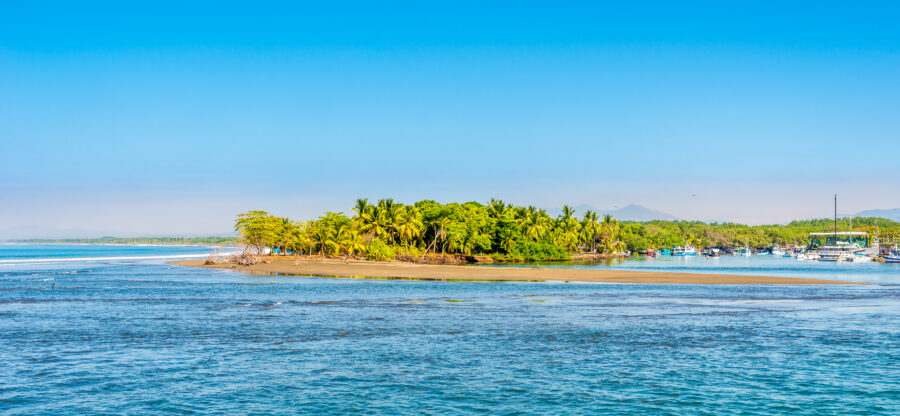
Costa Rica is generally safe for tourists, but take common-sense precautions. In Tamarindo, be cautious on beaches at night and watch for rip currents if swimming. Quepos and Manuel Antonio have fewer safety concerns but more wildlife encounters.
Health tips for both locations:
- Bring strong bug repellent (30 %+ DEET)
- Pack sunscreen SPF 50+ (it’s expensive to buy locally)
- Drink bottled or filtered water
- Consider travel insurance that covers medical evacuation
In Manuel Antonio, be aware of wild monkeys that might try to steal food or belongings. Never feed wildlife, as it’s harmful to their health and behavior.
Both areas have decent medical facilities, but serious issues require transport to San José. Pack any prescription medications you need, as specific brands might not be available.
See Related: Jaco vs Quepos: Key Differences to Choose Your Perfect Costa Rican Beach Destination
Frequently Asked Questions

Travelers choosing between Tamarindo and Quepos often have specific concerns about beaches, activities, and overall experience. These questions address the significant differences that can help you decide which destination suits your Costa Rica vacation plans.
What are the key differences between the beaches of Tamarindo and Quepos?
Tamarindo’s beaches feature golden sand stretches with consistent waves, making them popular for surfing and water activities. Many hotels and resorts are directly accessible to the beaches.
Manuel Antonio near Quepos offers more secluded beaches surrounded by lush greenery. Unlike Tamarindo’s beachfront accommodations, most Quepos/Manuel Antonio hotels are perched on hillsides, requiring a short trip to the shore.
The climate also differs significantly. Tamarindo in the North Pacific has a tropical dry climate with less rainfall during the green season, while Manuel Antonio stays greener year-round with more frequent precipitation.
How does nightlife compare to that of Tamarindo and Quepos?
Tamarindo boasts a more vibrant nightlife scene with numerous beachfront bars, clubs, and restaurants that stay open late. The town attracts a younger crowd looking for social activities after dark.
Quepos offers a more subdued evening experience. While there are certainly bars and restaurants, they generally close earlier and cater to a quieter crowd.
Many visitors to Manuel Antonio/Quepos prefer early mornings for wildlife viewing, so nightlife isn’t as emphasized as in Tamarindo’s surf culture.
What distinct wildlife experiences can visitors expect in Tamarindo versus Quepos?
Manuel Antonio near Quepos is the clear winner for wildlife enthusiasts. The national park hosts incredible biodiversity, including monkeys, sloths, toucans, and hundreds of bird species in a compact, accessible area.
While hiking trails in Manuel Antonio, you’ll likely encounter wildlife without extraordinary effort. The dense jungle creates a perfect habitat for viewing creatures in their natural environment.
Tamarindo offers wildlife viewing too, particularly at nearby estuaries and reserves, but it’s not as concentrated or guaranteed as in Manuel Antonio. Sea turtles nesting on nearby beaches is an exceptional Tamarindo area experience during certain seasons.
Can you compare the accessibility of tourist amenities in Tamarindo with those in Quepos?
Tamarindo has developed into a tourist-friendly destination. Numerous restaurants, shops, tour operators, and services are within walking distance of most accommodations. English is widely spoken, and the town caters well to international visitors.
Quepos offers good tourist infrastructure but on a smaller scale. The town primarily serves as a gateway to Manuel Antonio National Park, with fewer options but enough amenities for comfortable travel.
Both areas have ATMs, pharmacies, and grocery stores, but Tamarindo provides more variety and international options for dining and shopping.
Regarding family-friendly activities, how do Tamarindo and Quepos stack up against each other?
Manuel Antonio/Quepos excels for families interested in nature exploration. The national park offers easy walking trails where children can spot wildlife, plus beautiful beaches for swimming, protected inside the park boundaries.
Tamarindo provides more water-based activities for families, including surf lessons for beginners, catamaran tours, and swimming in areas with gentler waves. The flatter terrain makes it easier to navigate with strollers or young children.
Both destinations offer family-friendly accommodations, though Tamarindo has more resorts specifically designed with kid-friendly amenities like pools and kids’ clubs.
What factors should you consider when choosing between staying in Tamarindo vs. the vicinity of Manuel Antonio National Park?
Budget considerations matter when deciding. As noted in the search results, Quepos and Manuel Antonio are generally more expensive than Tamarindo, especially for accommodations and dining.
Your primary vacation goals should influence your choice. If beach time and surfing are priorities, Tamarindo makes sense. Manuel Antonio is superior for wildlife viewing and jungle experiences.
Transportation logistics differ, too. Tamarindo is closer to Liberia airport, while Manuel Antonio requires a longer drive from San José. If you’re planning a multi-destination trip, this could affect your decision.



